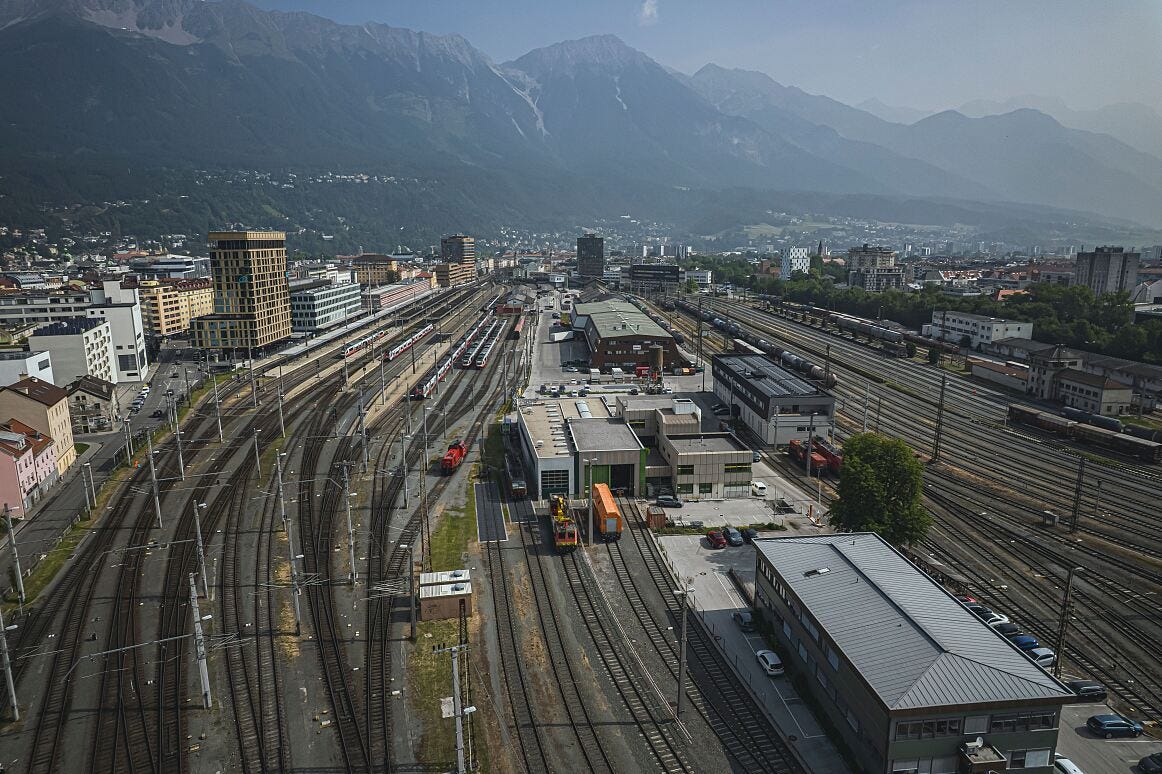Innsbruck hub rebuild kicks off to prepare for Brenner Base Tunnel

As ÖBB begins demolition at Innsbruck Main Station, the long-planned node upgrade enters its execution phase—positioning Tyrol’s capital to handle the step-change in cross-Alpine capacity once the Brenner Base Tunnel comes online.
QUICK TAKE
The issue: Innsbruck’s station and freight yard must be re-laid out to accommodate future BBT traffic and separate passenger–freight movements at a congested Alpine node.
The numbers:11,100 m² buildings + 2,000 m² ramps + ~700 m track to be removed (Oct 2025–Dec 2026)
Underpass project: EUR 43.3 million build cost (planning approved)
ÖBB framework allocations indicate over EUR 120 million for station reconstruction across 2025–2030
Why it matters: Innsbruck is a choke-point on the Scandinavian–Mediterranean TEN-T core network; readiness at the hub is critical for modal shift when BBT opens.
The Brenner Base Tunnel will cut travel time between Innsbruck and Fortezza by roughly an hour when it opens in the early 2030s. But without a redesigned node at Innsbruck, the tunnel’s added capacity hits a bottleneck where passenger platforms, freight sidings, and cross-border paths currently share limited space on layouts built for a different era.
ÖBB has moved from planning to physical works. Demolition crews are removing 11,100 square metres of buildings, 2,000 square metres of loading ramps, and around 700 linear metres of track through end-2026. The work clears space for new track arrangements and improved separation of passenger and freight flows.
A node built for the tunnel era
The Brenner corridor already carries more than 2.5 million trucks annually. EU funding supports the BBT project to shift traffic onto rail—but only if the network can absorb new freight paths without disrupting passenger services. Innsbruck serves as the main junction for regional trains across Tyrol, long-distance services to Germany and Italy, and freight on one of Europe’s busiest Alpine crossings.
ÖBB’s framework plan lists multiple budget lines for station reconstruction, suggesting a programme exceeding EUR 120 million through 2030. The demolition frees space for better stabling, dedicated turnback facilities, and clearer separation between freight and passenger services—changes designed to reduce conflicts and improve path allocation once BBT-era timetables take effect.
Stitching the city back together
In September 2025, Innsbruck’s city council approved planning for a EUR 43.3 million underpass linking the Wilten and Pradl districts beneath the station area, with cost-sharing between ÖBB, the Land Tirol, and the municipality. The underpass addresses the longstanding criticism that railway infrastructure divides the city, supporting local acceptance while improving pedestrian and cycling access.
Risks before the first BBT timetables
Multi-year construction at a live node carries integration risk. ÖBB must sequence work while maintaining current services, and temporary capacity constraints could affect punctuality during possession windows. If the tunnel opens before node works finish, the infrastructure could struggle to deliver full benefits. ÖBB appears to be pacing the programme to align with tunnel readiness, but that depends on both projects staying on track.

